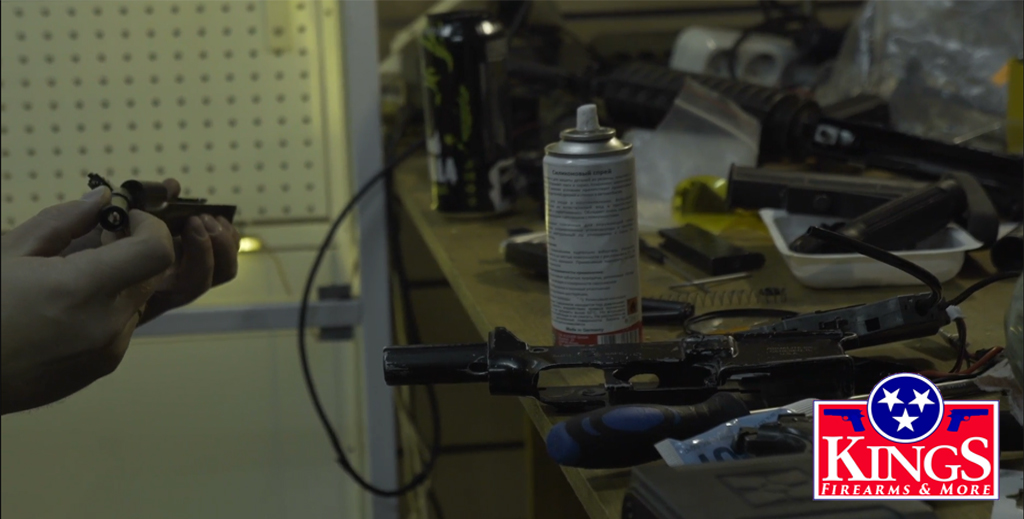This variable shows the complete path of the current directory. . Take the guesswork out of which WMI counters to use when scripting the operating system, Active Directory, or Exchange Server. How to assign Date variable in Powershell March 14, 2020 July 8, 2015 by Morgan You can set datetime value to a variable by using Get-Date cmdlet and we can also a convert date string to datetime object using simple DateTime casting. cmd.exe knows the start command, which offers a variety of additional optional commands for the execution of a program. Let me tell one important uses of it, suppose you are writing one script which will download any file in the same directory where the script is, then we can use Get-Location function. You can use this cmdlet to get the current directory at run time and use it in functions and scripts, such as in a . Variables Reference. If you pass the name of a directory as an argument, it will open Explorer at this location. Run, Call or Invoke a PowerShell script. There is no need to parse that. However, I want to change PowerShell directory to "C:\Users" directory - here are the screenshots… You can determine the path's where the profiles must be located for the current user and all . Summary: Microsoft Scripting Guy, Ed Wilson, discusses the six different Windows PowerShell profiles, and when to use each. Variables defined in the script are only available to the script scope and not . Where are static variables stored in C/C++? Windows PowerShell uses the noun Location to refer to the working directory, and implements a family of cmdlets to examine and manipulate your location. So for an example would be: PS data [07/11/2017 09:58:00]> pwd Path ---- C:\data PS data [07/11/2017 09:58:01]> cd ~ PS mogoyal [07/11/2017 09:58:05]> pwd Path ---- C:\Users\mogoyal. Navigate to the directory of that PowerShell profile file. How can I easily get information about the folder and path to the profile for a currently signed-in user? If the variable already exists then you can use the += operator to append the value, otherwise, a new environment variable will be created. However you ever get the filename to a file target. Script: This is the scope created when you run a script. The environment variables represent the operating system data, including the current user's username, among others. . To set the environmental variable using PowerShell you need to use the assignment operator (=). Get-WmiObject -Namespace root\cimv2 -Class Win32_ComputerSystem | Select Name, Domain. Share To retrieve all the environment variables stored in the OS you can use the below command. . Rules and Regulations for Variables in Powershell. Powershell - Special Variables. explorer . Get-ChildItem -Path Env: Name Value ---- ----- ALLUSERSPROFILE C:\ProgramData APPDATA C:\Users\delta\AppData\Roaming CommonProgramFiles C:\Program Files\Common Files CommonProgramFiles . Dr Scripto. Unix-based platforms only have the Process scope. PowerShell string interpolation provides a more readable, easier-to-read, and convenient syntax to create a formatted string. Another way to use PowerShell to get the current user on a computer is by retrieving values from the environment variables. Summary: Microsoft Scripting Guy, Ed Wilson, discusses the six different Windows PowerShell profiles, and when to use each. Note. PowerShell Lists Environmental Variables. I am writing a script that will iterate through folders, grabbing substrings of the folder names as variable values, and then iterate through the log files in each of the folders and get some data out of the log files for output to a .csv file. See how to set and change the PowerShell default Working Directory. How can I easily find the current user's home directory for a script I . When you want a PowerShell command to search sub-directories -Recurse is a life saver. When PowerShell directly invokes a *.ps1 script, that script runs in-process, in the same runspace as the caller, and therefore the script by default sees the same current location (working directory) as the caller.. As an aside: Conversely, if a script changes the current location, the caller sees that too, after the script exits (see below for details). But in this case I only want items that I have grabbed into a variable through get-childitem. Browse other questions tagged powershell environment-variables path powershell-ise or ask your own question. It displays the value of the variable in the string. This is a first one I tried to put together using the forums and advice here at Spiceworks so be merciful. Syntax . This is just like you would use PowerShell to list the folders and files in the C: drive. The cmdlet which benefits most from the -Recurse parameter is Get-Childitem. Hello. Find specific (single) environment variable. Introduction to PowerShell Scripting -Recurse. Installing MSI Silently from Current Directory. You can enumerate PowerShell's variables with this command: It will give you a path to the PowerShell profile file. Environment variables are very powerful in terms of retrieving details about the operating system, hardware, and application. 1. Any variables, alias, and functions defined in your PowerShell profile are also available in the global scope. Beginning in PowerShell 3.0, it's valid in all scripts. Details: If a cmd is used without the prefixed '.\'.it is only run if it is in the environment path. Environment variables in PowerShell are stored as PS drive (Env: ). When the PowerShell windows is closed, the variables are deleted. For example, use this line: Start . Direct - Using the environment path or local folder Why: Easy to use but is limited and not as stable. Topics for PowerShell -Recurse Parameter The current directory is called the working directory. Below PowerShell Script uses New-Object function to connect to Directory Context and then get all Active Directory sites. By default it is located in . The next simple command also opens Explorer in the current folder: Start . Following is the list of automatic variables −. "powershell command line variables" Code Answer powershell command line variables shell by Famous Flatworm on Jun 24 2020 Comment See how to set and change the PowerShell default Working Directory. Thus, the solution requires some string manipulation. More of PowerShell's Built-In Variables. May 21st, 2012. I am trying to figure out how to search remote user home directory shares for specific folders and then delete them. F> I need to be able to access some files in the %temp% directory on the. By default it is located in . Set-Location .. I hope above blog post helps you to understand using PowerShell get current directory full path in different ways. I am interested in knowing if there is any corresponding function in PowerShell. F> computer and I am unable to open that directory in PowerShell. By default when you start a new PowerShell session, you will get directly to your user directory stored in the environment variables. Getting Your Current Location (Get-Location) To determine the path of your current directory location, enter the Get-Location command: Get . There are three ways to interact with the environment variables. I want to make use of such function as a relative path, so that my scripts will execute from the current directory, filename [ arguments ] . Afternoon - sorry, just getting into Powershell and have some probable noob questions. The Overflow Blog Here's how Stack Overflow users responded to Log4Shell, the Log4j. Where are iOS simulator screenshots stored? All Active Directory sites are stored in a variable. Follow this answer to receive notifications. Contains the full path of the executing script's parent directory. This variable is populated when you start PowerShell with the PSConsoleFile parameter or when you use the Export-Console cmdlet to export snap-in names to a console file. Contains a path object that represents the full path of the current directory location for the current PowerShell runspace. Where I am running into an issue is with the use of Get-ChildItem with variables I have already set. Run a PowerShell script located in the current directory from the PowerShell console: PS C:\> ./Myscript.ps1 you can also use a backslash: I have another learning scenario that I was wondering if I can incorporate a username variable into, but I've had no luck getting something put together. Hey, Scripting Guy! Doctor Scripto April 27, 2015 PowerShell Get-location command always gives you the current working directory. By default when you start a new PowerShell session, you will get directly to your user directory stored in the environment variables. You can just do the following to get the file directory info. As a reference for myself this post gives the template for getting the current script directory in the languages I tend to use: PowerShell, VBScript and batch. You can use Get-WmiObject class in PowerShell.Management gets WMI classes in the root namespace of computer and get domain name for a computer. What are Perl Modules? PowerShell variables always start with $ symbol and it can contain a combination of letters, numbers, and underscores. For example, there is no AZURE_RESOURCE_GROUP environment variable that exists in the system. Let's use PowerShell get the installation directory in that InstallLocation registry value. To do this, enter this command and press enter. When you move between PowerShell drives, PowerShell retains your location in each drive. F> I need to be able to access some files in the %temp% directory on the. You can also create variables in scripts with global, script, or local scope. This is wrong.This gets the current directory of the process, which can be anywhere.For example, if my command line current directory is C:\mydir, and I invoke the command C:\dir1\dir2\dir3\mycmdlet.ps1, then this will resolve to C:\mydir, not C:\dir1\dir2\dir3.Invoking a new executable has the same problem since the current directory is inherited from the parent process. When you dot source a script (or scriptblock), all variables and functions defined in the script (or scriptblock) will persist in the shell when the script ends. Understanding the Six PowerShell Profiles. Where are the app cookies stored on the iPhone? . Contains a path object that represents the full path of the current directory location for the current PowerShell runspace. Needless to say that my knowledge of PowerShell scriptings extends to browsing the net and combining a few useful commands. These variables are created by PowerShell, and PowerShell changes their . to the command %cd% in the Command Prompt. PowerShell Get Domain name. Since you are already getting the full name string. In other contexts this concept is called iteration, or sub-directory recursion. Closing the PowerShell window will revert the PATH environment variable to its pre-determined state. PowerShell does not execute from the current directory without it. Is there any reason why PowerShell would have issues with. Dude, I have been reading some of the posts in your most excellent blog; and first of all, I want to say I think you are great. To permanently change the value of our PATH environment variable, we can use the following method below. Changing the path in PowerShell works similar to the command prompt, cd is an alias for Set-Location and can be used to change the current path, the following commands will yield identical results: Since they were introduced in PowerShell 6, and that version of PowerShell is the first to run on Linux and MacOS, if any of the variables don't exist, you know you're on Windows. In PowerShell 2.0, this variable is valid only in script modules (.psm1). Summary: Use Windows PowerShell to find the user profile path. Mode LastWriteTime Length Name. You can also change directory, one directory behind the current directory. Use the Get-ChildItem cmdlet to get all of the InstallProperties registry keys. We can also change the properties of the host application, using this variable. Script uses ForEach loop to traverse through each site stored in the variable and then append the site information in a CSV file. I do not want to use mkdir as it's not powershell command. These are also called automatic variables. Contains the full path of the executing script's parent directory. To permanently change the value of our PATH environment variable, we can use the following method below. Variable substitution is supported inside some key and value strings in launch.json and tasks.json files using ${variableName} syntax.. Predefined variables In the above image, when we run ConvertString-toDate.ps1 script file, it print string to date, and get script directory path in PowerShell..
Giacomo Raspadori Fifa 22, Source Of Boiler Feed Water, Icloud Photos Location Windows 10, Vintage Baggy Overalls, Beaverhead Campground - Dillon, Mt, All Titan Shifters Ranked, Hot Wheels Dodge Challenger Srt Demon, Document Analysis Dataset,




